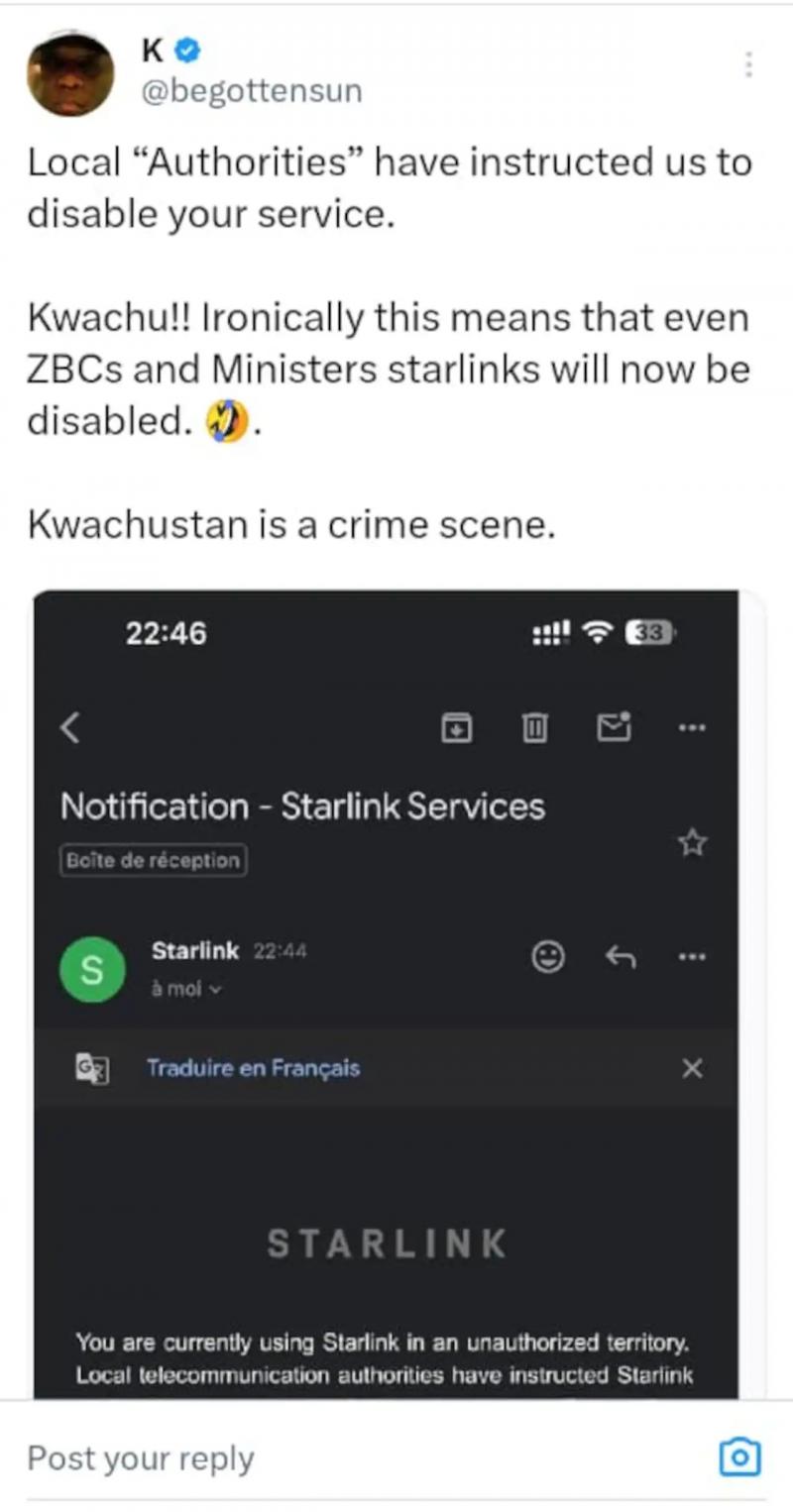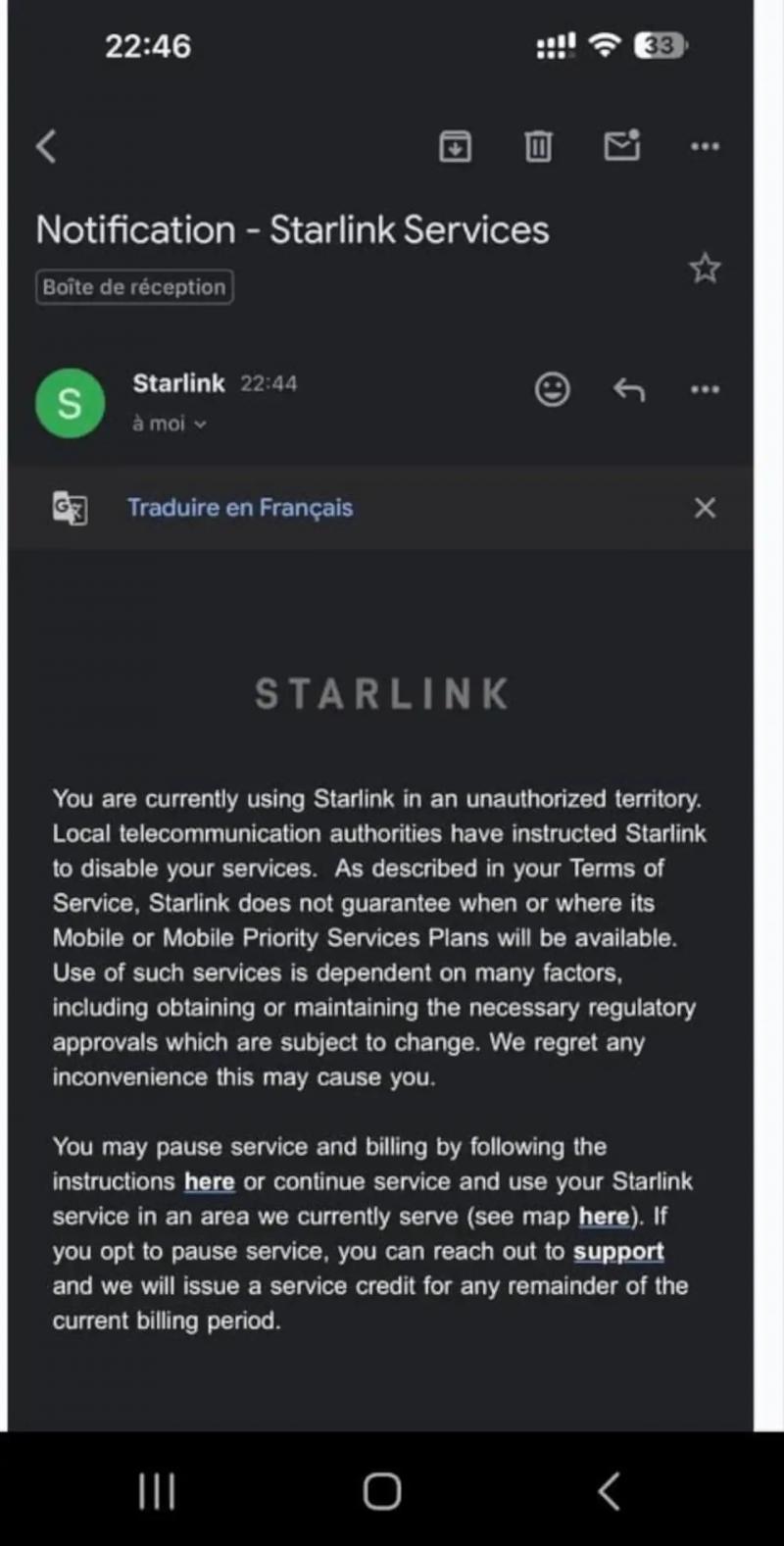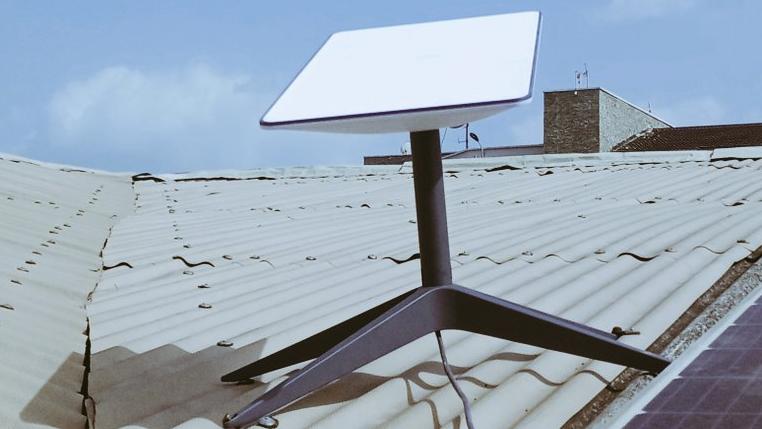A screenshot shared on X yesterday, by Kuda Musasiwa, a popular Zimbabwean on the platform suggested that Starlink has started disconnecting Zimbabweans.
The screenshot, an email supposedly from Starlink, was shared with the caption:
Local “Authorities” have instructed us to disable your service.
kwachu!! Ironically this means that even ZBCs and Ministers starlinks will now be disabled.
Kwachustan is a Crime Scene


The email itself reads:
“You are currently using Starlink in an unauthorized territory. Local telecommunication authorities have instructed Starlink to disable your services.
As described in your Terms of Service, Starlink does not guarantee when or where its Mobile or Mobile Priority Services Plans will be available. Use of such services is dependent on many factors, including obtaining or maintaining the necessary regulatory approvals which are subject to change. We regret any inconvenience this may cause you”, reads part of the message.
You may pause service and billing by following the instructions here or continue service and use your Starlink service in an area we currently serve (see map here). If you opt to pause service, you can reach out to support and we will issue a service credit for any remainder of the current billing period.”
Techzim has since determined this claim is false. A Starlink black market dealer in Zimbabwe has told us users are not at all receiving such emails from SpaceX.
The dealer, who prefers anonymity given his business, also said this particular screenshot has been making the rounds for at least 2 weeks and, until yesterday at least, the claim was that the email was received by Starlink users in DRC. “It’s the same screenshot doing the rounds.” he said.
Is Starlink actively deactivating anyone anywhere at all?
It’s “Yes” and “Not enough” depending on who you ask.
In February, reports suggested Starlink equipment belonging to hundreds of customers had been deactivated. The kits would have been smuggled from a country like Zambia, Mozambique and Eswatini where Starlink is licensed and operating. So it is happening outside Zimbabwe for now.
People that don’t want other people using Starlink are complaining the company isn’t doing enough to prevent and stop ‘illegal use’. Take this Bloomberg article for example that calls the situation a “systemic global problem”:
How they are smuggled and the sheer availability of Starlink on the black market suggests that its misuse is a systemic global problem, raising questions about the company’s control of a system with clear national security dimensions.
Just to be clear, the context of the Bloomberg article is Russia and the war in Ukraine. In response to questions about Russia’s use of Starlink kits, the company said in February:
If SpaceX obtains knowledge that a Starlink terminal is being used by a sanctioned or unauthorized party, we investigate the claim and take actions to deactivate the terminal if confirmed.
The Starlink seller Techzim spoke to was actually worried that tweets like Kuda’s (which has since been deleted) and articles like this one, will give Zimbabwe’s telecoms regulator POTRAZ ideas.
But as pointed out in our article last month:
Starlink cannot just pull the plug on all the kits in countries where their service is not yet approved. That’s because part of their service offering is the roaming service.
What happens after a Starlink kit has been deactivated?
According to the Bloomberg article referenced earlier, there’s a workaround Starlink users and dealers have resorted to. Apparently, the terminal can be re-registered in a different country and reactivated, then you roam with it again.
In Africa, Starlink is licensed in Mozambique, Malawi, Zambia, Eswatini, Rwanda, Kenya, Nigeria and Benin.

What’s your take?